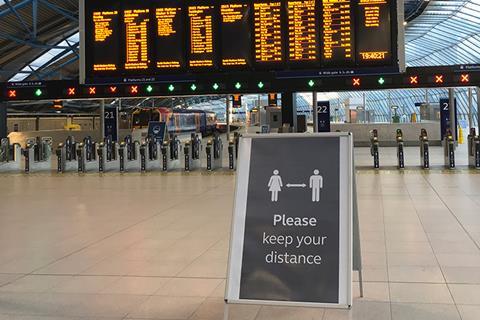
UK: Falls in the number of people using stations during the 2019-20 financial year can be partly explained by the coronavirus pandemic, the Office of Rail & Road said when its published its annual estimates of station usage on December 1.
The statistics cover April 2019 to March 2020, and thus include the period when the effects of the pandemic began to impact rail travel.
London Waterloo station was the busiest on the national network for the 16th consecutive year, with 86 903 518 entries and exits. This was down 7·3 million on the previous year, with the fall attributed to both strikes and the pandemic.
There were 43 stations with more than 10 million entries and exits, of which 27 were in London. Glasgow Central remained the busiest station in Scotland, but usage was down by 331 886 at 32·5 million passengers. Cardiff Central recorded 12·7 million entries and exits, a decrease of 2·0%.
The least used station was Berney Arms, where usage fell 90% to 42 entries and exits owing to services being suspended until February 2020 for signalling works.
There were six stations with fewer than 100 users. ORR noted that ‘we understand that highlighting the least used stations within these statistics can encourage people to visit them’, and last year’s least used stations, Denton and Stanlow & Thornton, increased from 46 users each to 92 and 82.
The station with the biggest percentage increase was London Paddington (17·5%) owing to the inclusion of 6·3 million journeys to and from Heathrow Airport.
Meridian Water, Robroyston, Warrington West and Worcestershire Parkway stations opened in 2019-20. Angel Road station closed and was replaced by Meridian Water, and all services ceased from Redcar British Steel. This took the total number of stations served by main line rail services to 2 567 on March 31 2020.
To understand the likely impact of Covid-19 ORR has produced an ‘alternative’ dataset for the period March 2019 to February 2020, with the aim of being as close to the main financial year dataset as possible while being largely being unaffected by the pandemic.
‘The dramatic drop in passenger numbers towards the end of March due to Covid-19 explains much of the drop in usage compared to last year’, said ORR Senior Statistical Analyst Jay Symonds. ‘With numbers staying at historically low levels during 2020, there is no doubt that next year’s figures will look a lot different.’



